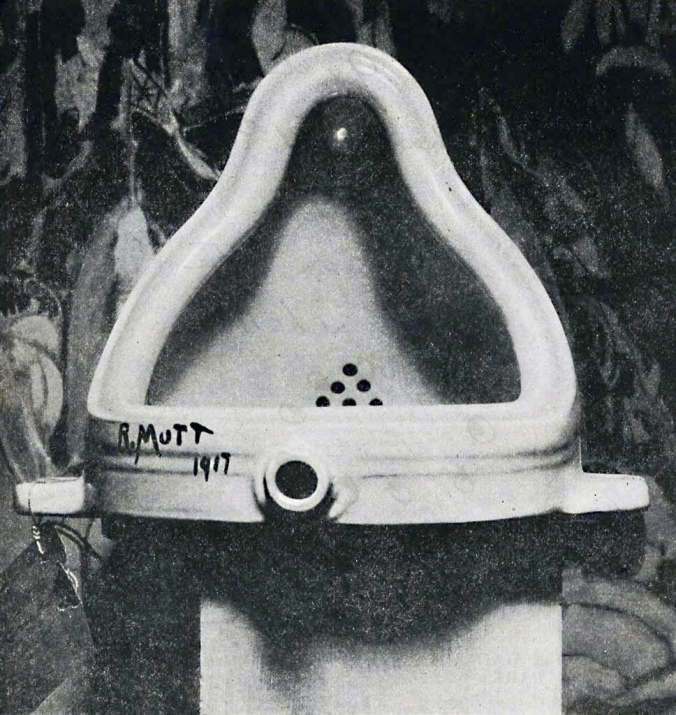
To continue to engage with the question ‘is the notion of the Avant-Garde as pertinent today as it was in the beginning of the twentieth-century’, we must engage with the etymological use of the word (avant-garde). The term, originally used in military practice to describe the foremost part of an advancing army, took on a whole new meaning when applied to innovative art in the latter part of the nineteenth century (Bishop). Furthermore, its initial application to these artists and writers denotes more to their eccentricity than to any inherently creative qualities in their work. This presents an ambiguous challenge for readers of the avant-garde today. In order for us to understand whether the avant-garde continues to subsist, an understanding of its present meaning is vital.
Historically, avant-gardism consists of ‘original’ or ‘authentic’ works created in direct opposition to the traditional or institutional assessment of art. This is paradoxical in its entirety. Historical or past avant-gardist art, although momentarily revolutionary, ultimately fails in its revolutionary usefulness as the art becomes outmoded. The ‘new’ and ‘original’ art matures into decadence, through no fault of its own and remains ‘original’ merely in historical terms. The works of Joyce, Beckett, Woolf, Picasso, Matisse and more recently Warhol prepared the way for future artists to continue with the process of experimentation and innovation. Therefore, when avant-garde art becomes fashionable- as say, collage in visual art and associational syntax in poetry already have, then they appear decadent, and contemporary artists feel aspired to try and transcend the old so as to make it new (Kostelanetz, Avant-Garde).Conventionally, avant-garde art endeavours to contest the traditional and philosophical notions of art, but today, all anti-traditional art is widely accepted both individually and institutionally. So how exactly does an artist create avant-gardist art today? The answer to this seemingly insoluble question is twofold. Firstly, an artist who attempts to be original with reference to content, might, succeed in creating a ‘shock value’ in their art, however, this art should not be considered avant-gardist art. The reason is, as already mentioned, the ‘shock value’ continually fluctuates. A painting depicting the beheading of an American journalist, by a member of the Islamic State, with the LGB flag as its backdrop, could be seen as having a ‘shock value’. This painting, unquestionably, would not be referred to as avant-gardist, since decadence alone is not enough to give a work such praiseworthy reference. With this mindless example, one realises, that it’s not a works content that truly matters but the method or media in which it is created. Therefore, a writer or artist must invent a new system of painting, or writing, to truly encapsulate the avant-garde, in all its generalities. Marcel Duchamp’s craftsmanship plays poorly in contrasts to his inventiveness when analysing his most eminent work. Duchamp invented a new method of artistic creation, a style he refers to as ‘ready-made’ art, in which the subject bared little importance to the meaning of the artwork.
Therefore, the definition of the avant-garde is as capricious as the concept of its meaning and will undoubtedly continue to change. In the following paragraph, I intend on using its more general meaning, that of the experimental and innovative delineation. Let us now look at some contemporary artists who are pushing today into tomorrow. Eva and Franco Mattes. Two artists from Italy who use new technologies to create original art. Internet art originated in the middle of the 1990s. Eva and Franco, are considered to be part of the second wave of this relatively new sensation. Similar to Duchamp, the pair enjoy engaging with the art world, in a disparaging and caustic manner. In one of their more famous works, “No Fun”, they choose a website where users surf webcam feeds, called Chatroulette (Burnett). In the room of their webcam, Franco pretends to hang himself and records the actions of strangers. This piece of performance art arouses diverse reactions from the viewers, ranging from complete horror to insensitive laughter. Eva and Franco understand that perception is our key to reality, and unlike artists before them, relay to the world this understanding in a new and experimental fashion. Academic artists might have a problem crediting their ‘performance’ as art, and for this reason I believe ‘No Fun’ to be of an avant-garde standard. Thus, artists must not reinvent imagery but instead reinvent the method used in which to display imagery.
Works Cited
Bishop, Thomas. “Changing Concepts of Avant-Garde in XXth Century Literature.” The French Review (1964): 34-41. Jstor.
Burnett, Zaron. “Notes from the Avant-Garde: 5 artisit pushing today into tomorrow.” 17 April 2013. thoughtcatalogue.com. Website/Blog. 20 10 2014.
Kostelanetz, Richard. “Avant-Garde.” Hall, Donald. Claims for Poetry. Michigan: University of Michigan Press, 1982. 238-245. Print.
—. “Avant-Garde (1984).” New England Review and Bread Loaf Quarterly (1984): 24-40. Jstor.
